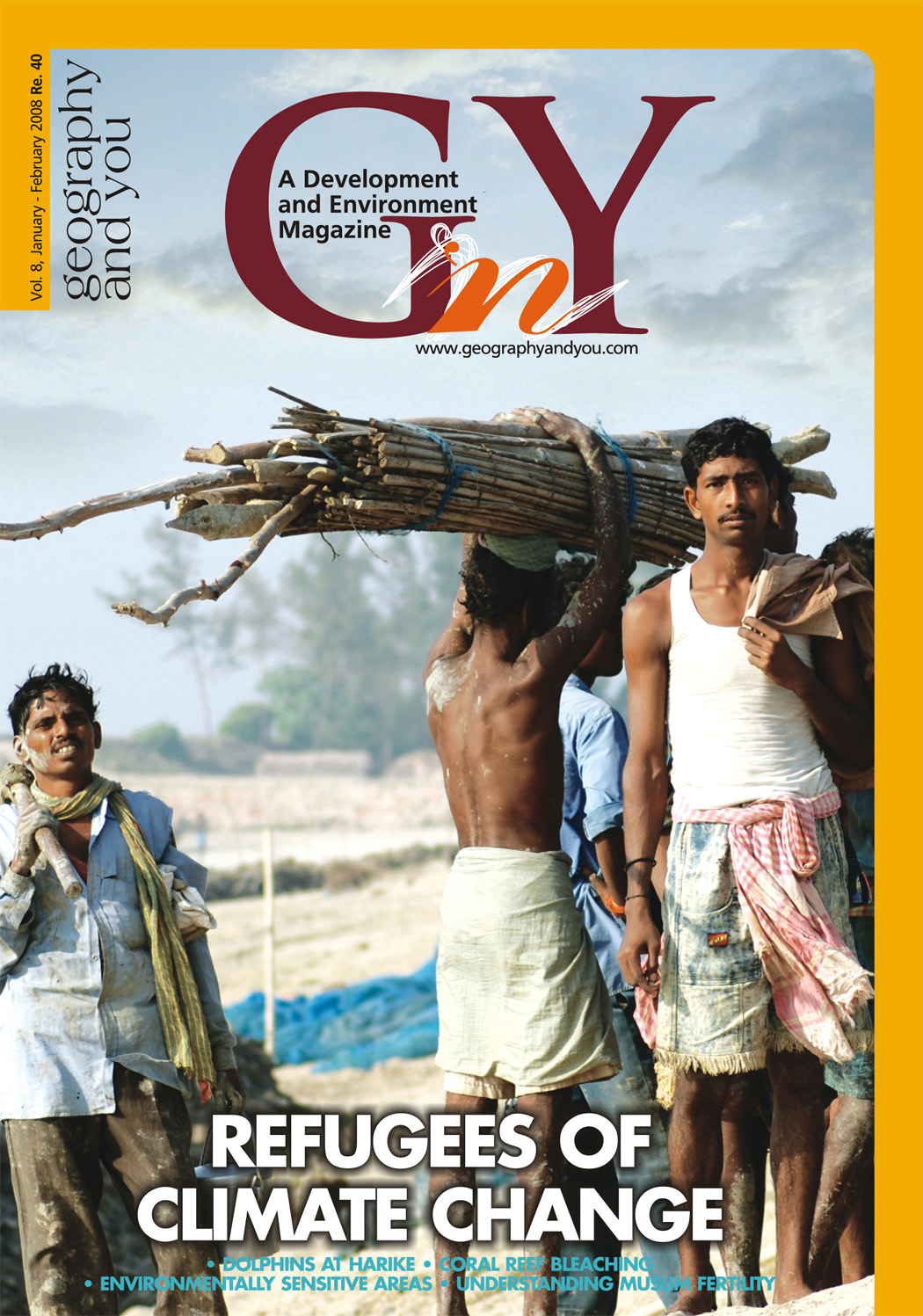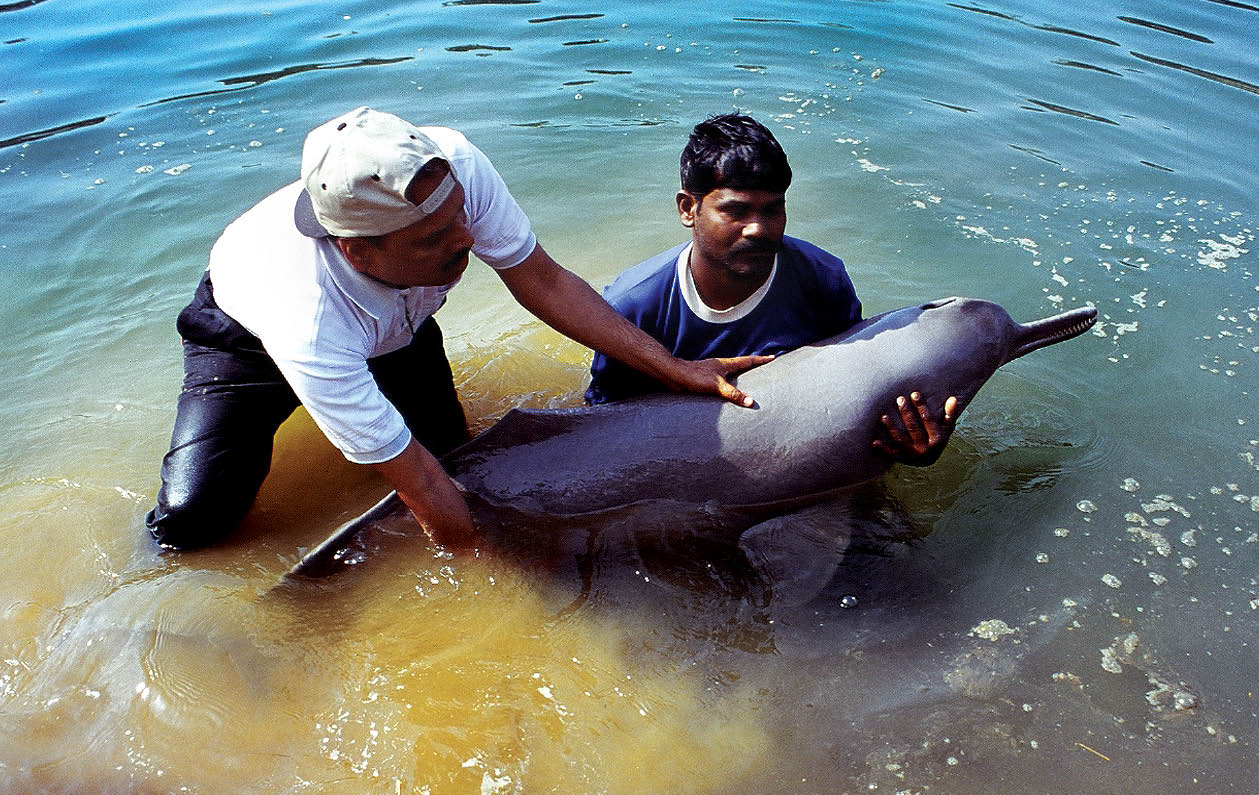
Inside this issue
Wildlife Watch
December 2007 saw the confirmed splashing of several beautiful dolphins. Mothers with their enrapturing calves, adult males on their lonesome quest for food and mate and juveniles swishing the murky waters till darkness descended.
Natural Resources
In the Indo-Gangetic and Brahmaputra plains, ground water potential is very high and such areas can support large scale development. In peninsular India and hilly states, however, groundwater potential is relatively much lower.
Survey of India
The advancements in digital technologies have now made it possible to use diverse spatial databases in an integrated manner. The responsibility for producing, maintaining and disseminating the topographic map database of the whole country, which is the foundation of all spatial data vests with the Survey of India (SoI).
Traveller's diary
Day excursion to Masroor in Himachal Pradesh happened to be one of the highlights of our summer vacation at Mcleodganj. The temple standing magnificently on a hill crescent is a unique example of monolithic temples in the sub Himalayan region. ...
Case Study Orissa
The spurious drug industry is well established in India. According to the World Health Organisation 35 percent of the world’s spurious drugs are produced in India, followed by Nigeria. .....
Forests of Mizoram
Bamboo grows wild in at least 30 percent of Mizoram's total geographical area of 21,081 square kilometers. The plant is of two types, ‘mau’ and ‘thing’ -Melocanna bamboo Soidef and Bambusa tulda classified by European botanists. ....
Green Money
Oceanic Concern
Coral reef bleaching is caused by anthropogenic and natural variations in reef environment including warm sea surface temperature, solar irradiance, sedimentation, xenobiotics, subaerial exposure, inorganic nutrients, freshwater dilution, and epizootics.
Sustainable Development
With indiscriminate use of land and unplanned development, the physical environment and heritage sites are facing degradation. Environment today stand directly opposed to the very process of developmental work.
Technology Pollution
Computers and electronics have revolutionised the world but brought with it negatives that have created issues of e waste. Developing nations fall prey and turn into toxic dumps with carcinogenic wastes leaching into ground water and noxious fumes polluting the atmosphere through open burning.
Demographic Studies
Since Independence India’s effort towards sustained fertility decline in all population groups is well documented. However, insufficiency of study on religious differentials of fertility due to political sensitivity proves to be barrier for enumerating programmes.
In brief
Dear Readers, Your rising interest and feed back is a source of inspiration for the team that shapes G&Y. I had a dream when I started this magazine way back in 2001, but now I can say that I can see the dream coming true. We are now subscribed by individuals even from Arunachal, Kavaratti,

